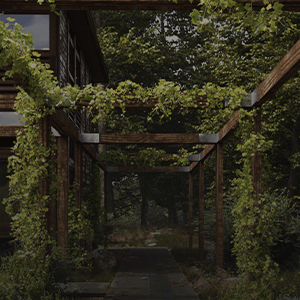CGPress uses technology like cookies to analyse the number of visitors to our site and how it is navigated. We DO NOT sell or profit from your data beyond displaying inconspicuous adverts relevant to CG artists. It'd really help us out if you could accept the cookies, but of course we appreciate your choice not to share data.
The technical storage or access is strictly necessary for the legitimate purpose of enabling the use of a specific service explicitly requested by the subscriber or user, or for the sole purpose of carrying out the transmission of a communication over an electronic communications network.
The technical storage or access is necessary for the legitimate purpose of storing preferences that are not requested by the subscriber or user.
The technical storage or access that is used exclusively for statistical purposes.
The technical storage or access that is used exclusively for anonymous statistical purposes. Without a subpoena, voluntary compliance on the part of your Internet Service Provider, or additional records from a third party, information stored or retrieved for this purpose alone cannot usually be used to identify you.
The technical storage or access is required to create user profiles to send advertising, or to track the user on a website or across several websites for similar marketing purposes.








What you demonstrate doesn’t need deep images at all. All you needed was an RGBA pass with one channel per teapot and one for the floor. That’s how we’ve done color-correction for Krakatoa for ages since it doesn’t support deep images. Would have been less tools in Nuke, too, and could have been done with other workflows.
How much larger were the deep image EXR’s than standard 2.0 ones?
Although those color corrections worked in your scenario, the results produced by Deep EXR is more mathematically correct then doing RGBA passes which don’t contain any depth information. Therefore the overlapping/aliasing pixels will actually be color correcting inaccurately. In most cases the Deep is no necessary, but it does however produce better results. Aside from that it’s not to say that I don’t still prefer the 2D exr’s over the deep ones. The tutorial was meant to really just explore and show others how to produce these renders on their own.
I’m on the same boat you are though. I still use 2D exr’s way more often than the deep ones. There are however some cases that Deep is necessary, specifically when rendering in camera depth of field and motion blur. Not to forget it helps a ton when doing roto masks for cards getting placed in 3D comp space.
The full HD Deep EXR was around 38MB.
Not sure how big the regular one would be. Didn’t render that.
Chad, while Joker Martini only displayed one use you can do so much more with deep data that makes it worthwhile in a lot of scenarios. I am hoping that more and more software support deep data like FumeFX and Krakatoa as that would make it so much easier to comp those elements into other renders.
Also, while this article only showed CC’ing one object, you can also effectively light in 3D space (without shadows, or at least that I am aware of). Before deep data you could do this with a ppass. I remember one comper I worked with who introduced me to this adding flickering flames behind buildings without the need to re-render the image in 3D. I still use this technique from time to time.
Personally I am not fond of worrying about disk space when it comes to giving artists more tools that allow them to work faster. Storage is somewhat cheap compared to artist pay.
I think this was a good article to introduce users to deep images, just know that there’s so much more you can do with it.
The size is important (as is the example workflow) because you have to define a sample rate in the renderer and the in the EXR file. VRay doesn’t render those added samples for free, you’re going to increase your rendertime. And the larger files create more I/O and rendering on the comp side as well. Storage is cheap, but time is not.
So in this case, you’re adding more time to the process for not much return. I’m actually curious what Joker Martini means when he says it’s more mathematically correct? That might be something to put in your example. Are you saving out an absorption channel that Nuke can actually use?